Obedience Class III – Down Stay
Today’s obedience session was on Squids biggest distraction in her down stay – the sound of an agility tunnel.
Today’s obedience session was on Squids biggest distraction in her down stay – the sound of an agility tunnel.

We came back home yesterday. It had started to snow when we came to Sweden on Monday, but we still managed to get home before the chaos started. It’s been snowing a lot today and traffic is just crazy in many places. Yo want to stay home if you can. I don’t look forward to a 5 hour (under normal conditions) drive south on Friday, but hopefully the worst is over by then.
Today, I’m starting a series of posts with videos of training all the exercises in Swedish obedience class III. Why? Because Squid and I need to get more obedience training done. It’s a year and a half since she competed in class II, so it’s about time we get started on class III…
First exercise is the sit stay in a group. This is what our rules say about it:
The handlers sit their dogs next to each other with 5 meters in between and leave walking 20 meters, where they stay visible to and facing the dog. The dogs shall sit for 1 minute without moving. Before the handler leaves the dog he is allowed to use the command “stay”. The handlers return to their dogs at the same time, on the ring stewards command.
Squid and I haven’t really trained the sit stay for this exercise, but I think that she’s got a good understanding of that “sit” means don’t move you’re feet until I tell you to. My first test today was to see how long she would sit for if I just left her and did nothing. Distractions can be challenging, but the biggest distraction is often to do nothing and just wait. I thought that Squid would lie down after a whole, and I decided to use a timer and note how long she would sit for. I expected her to fail, but I also decided that I would reward if she didn’t move her feet in two minutes (it was really cold, so not the time for marathon sit stays). She sat very nicely for two minutes, so I got to reward. Nice to see that her understanding of “sit” is strong.
Next session was on distractions. We did get Squid to fail once here. I don’t think there are many appetizing distractions that would get her out of her sit (dogs running through tunnels close to her not included, that might take us a few more years to master), but she can decide to lie down if she feels uneasy. My training should therefore focus more on getting her to feel safe and happy around some pressure (like dogs very close to her, someone using a harsh voice near her etc.) rather than using thrown toys and food lures.
I did get a question about the criteria for the sit stay. I’m satisfied as long as she doesn’t move her feet at all. She is allowed to move her head to look at a distraction (but I often find that she likes to stare at me when someone tries to distract her, she’s probably found it to be helpful). At the level that I plan to compete with Squid, I don’t think anyone would mind if she looked around as long as it isn’t much. If I feel like it, I don’t think it will be a problem to add criteria for her head later on.
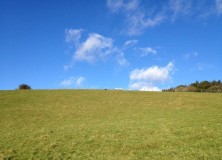
We’ve spent a wonderful week in Wales with Jen, Win and Squid. It’s been a long time since Thomas and I traveled together and I’m very glad that we did. Our main reason for coming here was to breed Win (Epic’s sister) to Kinloch Cian. It looked like the weather would be really bad here, but we’ve had a week of mostly sun. I’m so lucky with the weather this fall. It seems like the sun comes out wherever I go. We’re probably not as fortunate when we get home. It’s been snowing and it seems like it will stay cold. I don’t mind snow, except we can’t do much herding when everything’s covered with it. And that’s terrible right now since this week has brought so much inspiration.
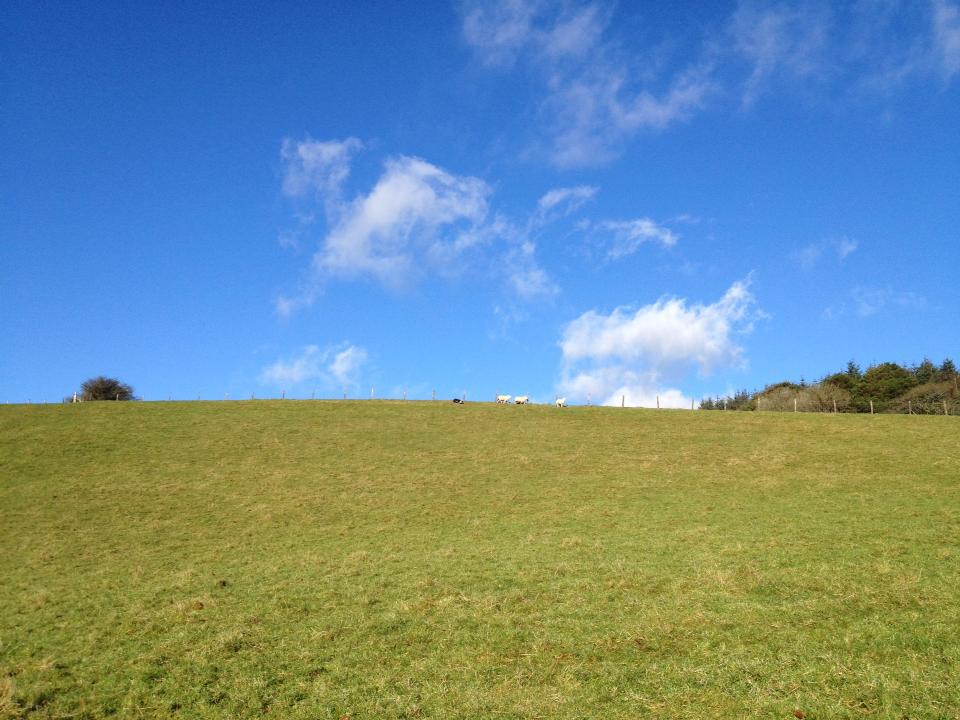
We’ve trained on the hills in the sun and all three dogs have gained both skill and experience. Our male dogs had to stay at home as their rabies vaccination was too recent, but I guess they’re better off at home than in a car/cottage with Win in full heat. Today, we watched the South Wales Nursery Final which was very interesting. Yesterday, we were lucky enough to get to watch some field training with a really good cocker spaniel handler and trainer. Also very inspiring and interesting.
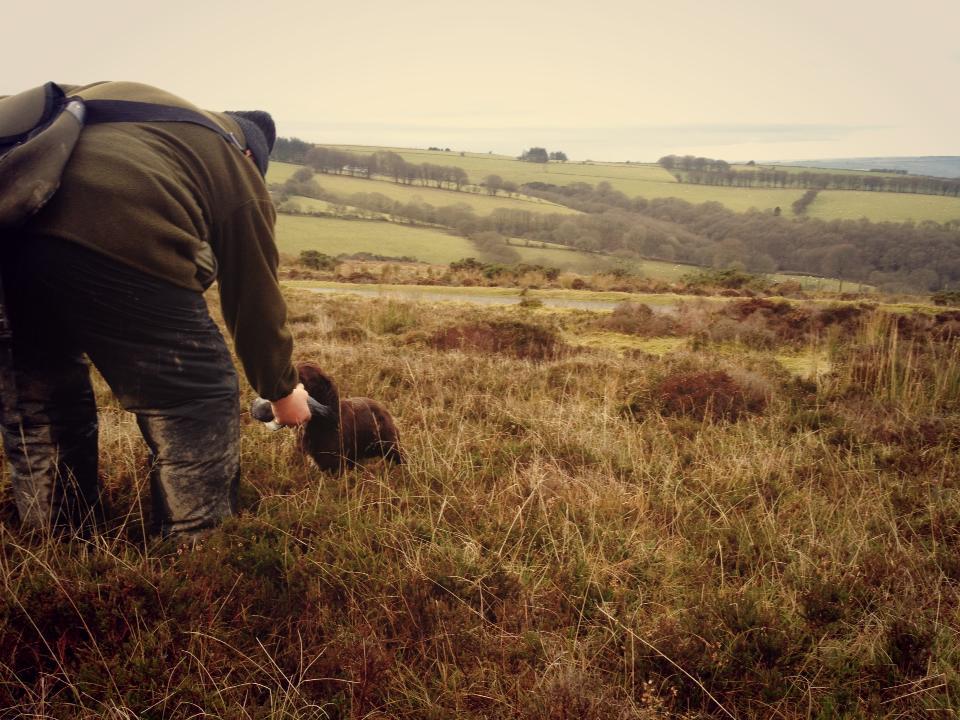

One of the hardest things to handle for our dogs in competition is the lack of reward. Not getting an anticipated reward can result in frustration, anxiety or reduced motivation. Those are not feelings that we want in training or competition, so it is critical that we teach the dog to master no reward events.
We want the dog’s reaction to no reward to be to focus and try harder, and we don’t want it to be a big deal to the dog. Shaping teaches the dog this from the start. It is normal in shaping for rewards to be withheld, and the dog has to focus and try again in order to get a reward. Good shaping makes intermittent reinforcement and training for competition easy later on!
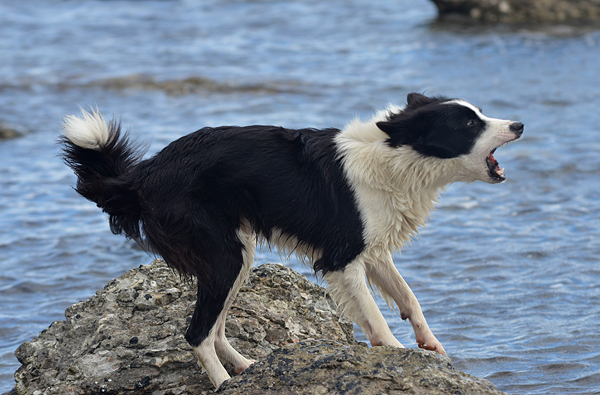

I want my dogs to actively take responsibility for keeping focus and trying hard when we’re working together. I never want to have to ask them to work, but rather want them asking me for a new task at all times in training or competition. This is, I think, one of the key elements to success in the competition ring. Even energetic dogs that like to work will get lazy and lose focus if we constantly take responsibility for keeping them with us in the ring. Losing the dogs attention when training, or even worse – competing, is very aversive to most trainers and taking responsibility for the dogs focus (for example by asking for it, talking to the dog with a happy voice, moving in a fun way, commanding or threatening the dog) is negatively reinforced since it often works in the short term. Unfortunately, it only makes the problem worse in the long run.
What does this have to do with shaping? Everything! I believe that shaping is the perfect way of teaching the dog a great division of responsibility. I have great rewards, but the dog has to work to earn them. I will not cheerlead the dog to work, nor use the rewards as a lure to get behavior. I am quietly observing the dog and then rewarding good effort. This can be started as soon as I start training my puppy at 8 weeks, and the puppy will learn one of the most important lessons for success in competitions right away. Shaping teaches the dog to be the active part in training, always focused on working to get that great reward – especially when I am just quietly focused (just like in competition!).

One of the things I like most about using shaping (learning based on the dogs own initiative and no prompts or lures) to teach new things, is that I get instant feedback on the clarity of my teaching and the value of the rewards I am using. Dog trainers seem to focus way too much on getting the behavior and too little on actually reinforcing behavior. While luring might get you the behavior quickly, it is hard to tell if you’re actually building value for the behavior or for the prompts used. I think that using help often builds much more value for following our hand/the food/the target than for the actual behavior, and it is very hard to know what is what until you try to fade the prompt.
Using shaping gives you instant feedback on the value of your rewards (does the dog want to repeat the behavior that produces the reward). If you find that your dog loses interest in repeating the behavior, you should look at how you are rewarding rather than introducing a help (body language, encouraging chatter, cues, targets, lures etc.). This is harder than it sounds, it seems to be human to focus on prompting behavior rather than reinforcing it, but when you get in the habit of constantly evaluating value you will get addicted to the instant feedback that shaping provides in a much clearer way than luring does.
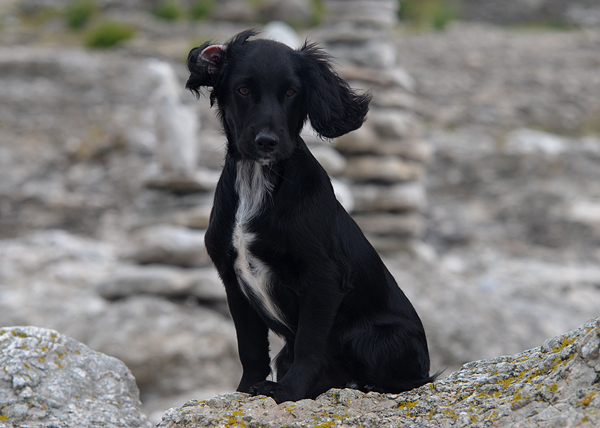
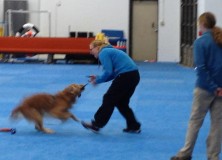
I’m on my way back from almost two weeks in the U.S. The main purpose of my trip was to teach at PosiDog in Columbus, Ohio, but I also had time to see family in both Washington D.C and in North Carolina. I’ve also enjoyed the sun and mild weather, as Sweden in November is usually dark, cold and wet.
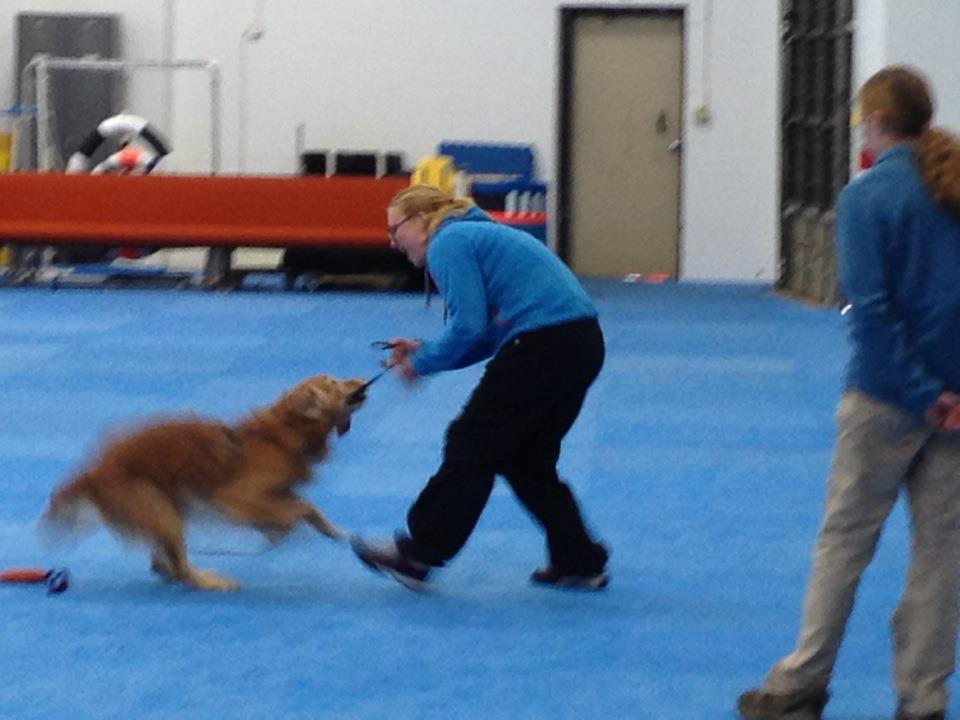
Teaching in Ohio was a lot of fun. We worked on obedience for five days and it was great to have so much time to make sure that everybody was making progress and had a plan of action before I left. Most of the teams that worked in the seminar have signed up for working spots in our new online Foundation Class starting later this week. I really look forward to that. Online teaching is really perfect for students living far away, especially when it can be combined with some real life coaching once in a while.
One subject that we talked about a lot was shaping. I love shaping and use it to teach the vast majority of behaviors that I use for obedience. If shaping feels like a bad idea, it’s usually only because I still haven’t found the right way to shape it yet. I know that many clicker trainers don’t shape a lot of behaviors and that it is sometimes frowned upon and considered too complicated or time consuming. I really don’t think it is and I have a lot of reasons why I like to use shaping. We’ve listed them all in our book “Shaping” that was published in August, but since the book only can be read in Swedish at the moment, I will list some of the reasons why I chose shaping in the blog, so keep your eyes open for that.
I really look forward to seeing my own dogs again. They’ve been in good hands while I’ve been gone, but I think they are a bit bored by now and very ready to work. I am too, even though I just missed a night of sleep going east over the Atlantic.

We have decided to do one more month of the popular online heeling workshop!
We cover all aspects of heeling in text and video in our online workshop. If you want more than instructions, you can sign up for a working spot and send us as many videos as you like for an entire month. We will comment on your training and help you progress. Sign up here!
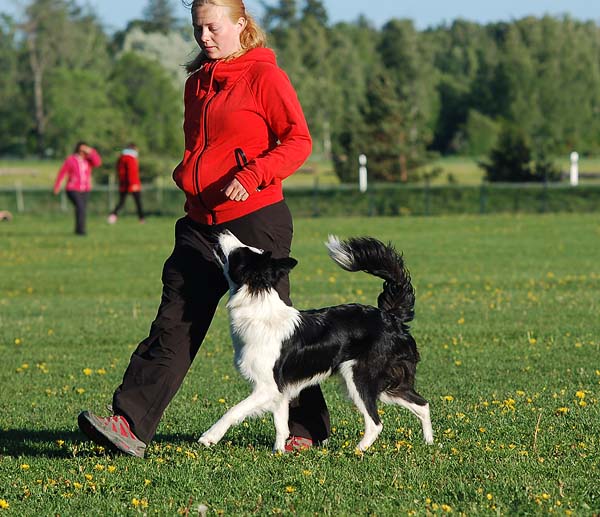

We’re dedicating the whole month of October to help you teach and perfect heelwork. Heeling is a complex exercise that can be used for obedience, rally, canine freestyle and heelwork to music. We cover all aspects of heeling in text and video in our October online workshop. If you want more than instructions, you can sign up for a working spot and send us as many videos as you like for an entire month. We will comment on your training and help you progress. Sign up here!


Jessica Martin, FCI world champion 2010, held two seminars here the week after European Open. We had a great time and got very inspired, so I decided to ask Jess to do an online agility class for us here at fannygott.com
I’m happy that she wanted to do it, and I’m very excited to work in this class with my dogs. We will focus on handling with a dog training/jumping perspective. Join the fun here!
